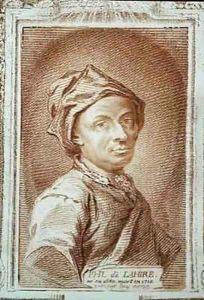de la Hire, Philippe Paintings
Philippe de la Hire, born on March 18, 1640, in Paris, France, was a versatile and accomplished figure in the world of art and science during the 17th century. Although primarily remembered as a painter, he was also a mathematician, astronomer, and architect, reflecting the interdisciplinary spirit of the Enlightenment.
De la Hire was born into an artistic family; his father, Laurent de La Hire, was a renowned painter, which provided Philippe with an environment steeped in the arts from an early age. He received his initial artistic training from his father, and later studied under the tutelage of artists such as Charles Le Brun, who was the leading artist of King Louis XIV's reign. De la Hire's classical education was not limited to painting; he also pursued studies in geometry and science, which would later influence his diverse career.
Philippe de la Hire's paintings often incorporated the baroque style that was predominant during his time, characterized by dramatic expression, rich coloration, and bold contrast of light and shadow. He was adept at various subjects including landscapes, portraits, and religious scenes. His works can be found in several prominent locations, such as the Versailles Palace and the Louvre Museum.
De la Hire's interests and contributions extended well beyond painting. In the realm of science, he made significant strides in astronomy. He was appointed as a mathematician to the French Académie Royale des Sciences in 1678 and later held the position of professor of mathematics at the Collège de France. De la Hire conducted extensive lunar observations and contributed to the development of descriptive geometry. His work in cartography and engineering also distinguished him, and he participated in various projects, including the plans for the fortifications of places like Rochefort and Paris.
Notably, de la Hire's interdisciplinary expertise blended the precision of science with the aesthetics of art, allowing him to approach his architectural endeavors with a unique perspective. His architectural achievements include the design of churches and other structures, in which he often incorporated geometric principles.
Philippe de la Hire left a lasting legacy through his paintings, scientific research, and architectural designs. He passed away on April 21, 1718, in Paris. His contributions to art and science continued to be recognized posthumously, and his works remain a testament to the fruitful intersection of these disciplines during the Enlightenment era.
